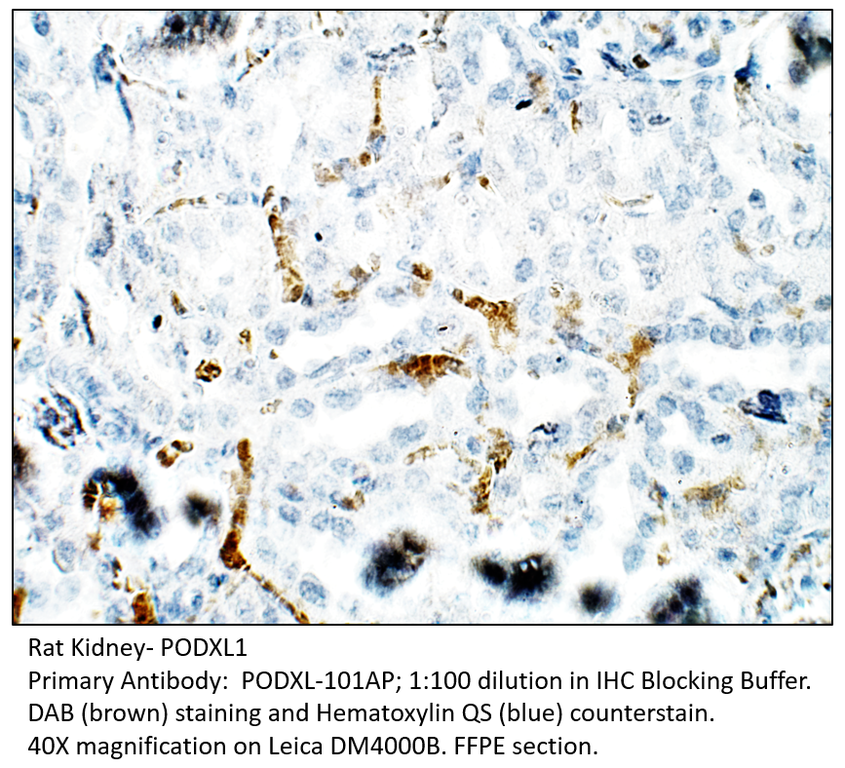|
General Information
|
|
|
Product
|
PODXL1 Antibody
|
|
Description
|
Affinity Purified Podocalyxin isoform 1 Antibody N-epitope
|
|
Verified Applications
|
DB, ELISA, IHC, IP, WB
|
|
Host
|
Rabbit
|
|
Species Cross Reactivity
|
Human, Monkey, Mouse, Rat
|
|
Immunogen
|
Synthetic peptide corresponding amino acid region 200-250 on human PODXL protein.
|
| Specificity |
This antibody will react with PODXL isoform 1 and will not detect PODXL isoform 2. |
|
Accession #
|
NCBI: NP_001018121.1
|
|
Physical Properties
|
|
|
Quantity
|
100 µg
|
|
Volume
|
200 µl
|
|
Concentration
|
0.55-0.75 µg/µl in antibody stabilization buffer
|
|
Form
|
Affinity Purified
|
|
Clonality
|
Polyclonal
|
|
Storage
|
-20⁰C for long term storage
|
|
Application Protocol
|
|
Dot Blot
|
1:4,000
|
|
ELISA
|
1:4,000
|
| Immunohistochemistry |
1:50-1:100 |
|
Immunoprecipitation
|
1:150
|
|
Western Blot
|
1:500
|
|
Protein
|
|
Uniprot #
|
O00592
|
|
Overview
|
Involved in the regulation of both adhesion and cell morphology and cancer progression. Funciton as an anti-aging adhesive molecule that maintains an open filtration pathway between neighboring foot processes in the podocyte by charge repulsion.
|
|
Subcellular Location
|
Apical cell membrane, Cell projection, Membrane
|
|
Expression
|
Glomerular epithelium cell (podocyte)
|
|
Structure
|
Monomer; when associated with the membrane raft. Oligomer; when integrated in the apical membrane.
|
|
Alternative Nomenclature
|
GCTM-2 antigen antibody
Gp200 antibody
MGC138240 antibody
PC antibody
PCLP antibody
PCLP1 antibody
Pcx antibody
Podocalyxin antibody
Podocalyxin-like protein 1 antibody
Podxl antibody
|
| |
|



 PODXL1 Antibody FITC
PODXL1 Antibody FITC PODXL1 Antibody BIOTIN
PODXL1 Antibody BIOTIN PODXL1 Blocking Peptide
PODXL1 Blocking Peptide PODXL Positive Control
PODXL Positive Control